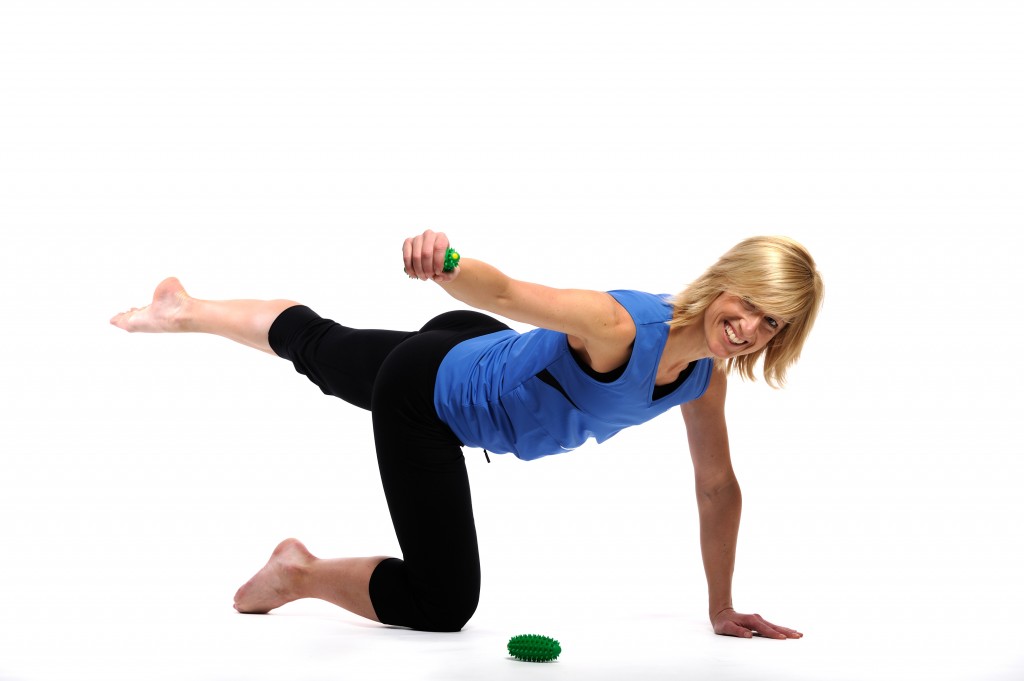 Functional figure training in a course
Functional figure training in a course
In her book “Functional Figure Training”, Gabi Fastner shows how to make something new out of familiar exercises, and give them a functional touch.
What you count as functional training depends on the respective training goal of the course. These goals can include:
- Performance of everyday tasks,
- Injury-free training for sport or leisure activities,
- Sport-specific preparation for athletes,
- General improvement of posture, figure, flexibility, reaction speeds, concentration, or
- Maintenance of mobility with age.
Innovative and classic aids, such as the Brasil, the Ballkissen or the Powerball ABS can be used for a great variety of highly effective exercises.
Training multiple muscle groups
In functional training the participants learn how to stabilise themselves in various positions, to balance and to control their movements. Without external help. This means a rethink – away from stationary fitness equipment in which your body is fixed in a certain position.
The focus is on performance of movements which are oriented toward our behaviour in everyday life or movements in a certain sport. That’s why functional training doesn’t isolate a certain muscle, but rather always uses multiple muscle groups at the same time. This means that natural movement sequences are carried out which train the tummy, legs and butt.
The workout includes both dynamic and static components, and is thus also stabilisation training. After all, the main task of some muscles is stabilisation. Exercises for these muscle groups are either static, or are carried out with small movements and little physical effort. The intelligent, varied exercises protect our body from injuries and the effects of ageing, and teach us how to stabilize ourselves in everyday life.
In short: it is modern, flexible training which is fun and promises results after only a few sessions, and which optimally prepares you for various types of sport and everyday life.
Variation through training of the analysers
Examples in the following. How the analysers can be trained:
- Optical analysers: the eyes
Observe your posture in the mirror during an exercise, carry out balance exercises with your eyes open, move your eyes up, down, right and left. - Acoustic analysers: the ears
Give your movement a rhythm by shaking the Brasils. - Vestibular analyser: the sense of balance in the ears
Move your head to the right, left, up and down (including under your knees). Change your support and include rotations on the Powerball or Dynair Ballkissen. - Tactile analyser: the skin
Feel the nubs on the Brasil in your hand, massage yourself or your partner with the Brasil, or lie on the Ballkissen and feel its surface. - Kinesthetic analyser: muscle and movement
Feel your posture, be aware of your body, perform an exercise slowly, use additional weight and feel your breath.
These variations in functional training make familiar exercises more intensive, more valuable and more interesting.
Gabi Fastner






